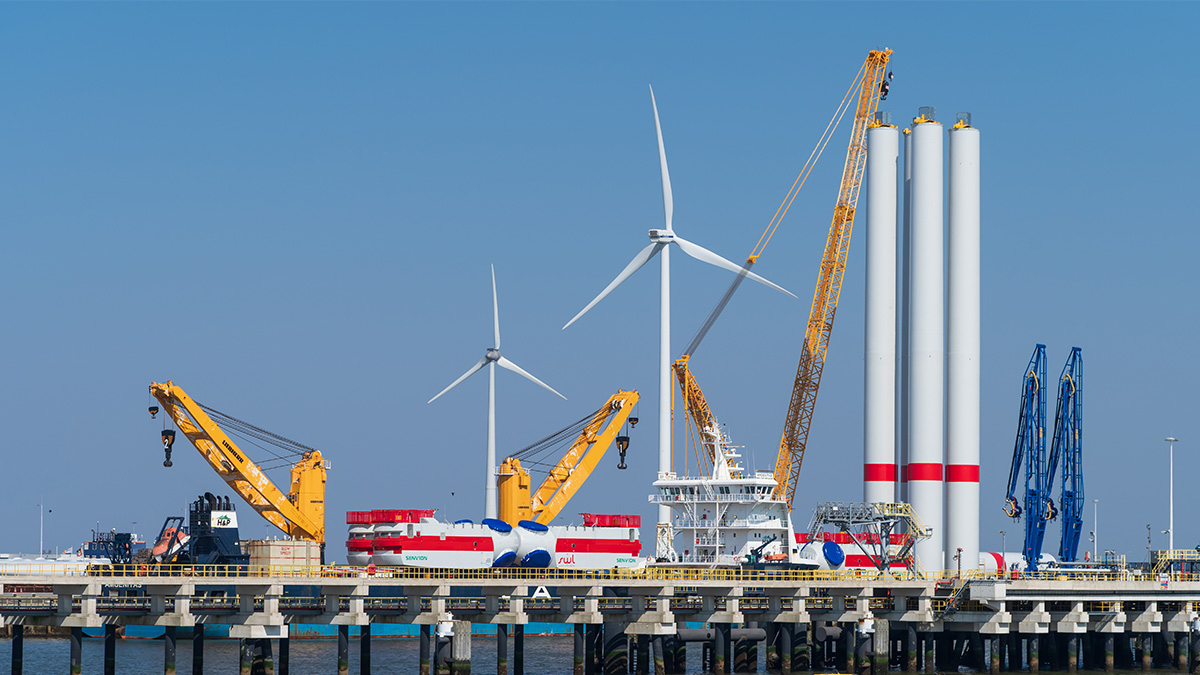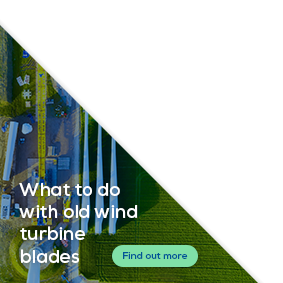News
Europe needs stronger ports and more vessels to meet its offshore wind goals

4 August 2025
Europe aims to increase its offshore wind capacity from 36.6 GW today to 84 GW by 2030. The maritime supply chain—particularly shipbuilding and port infrastructure—plays a critical role in supporting Europe’s energy security. But one of the most pressing challenges today is the lack of timely investment in vessel manufacturing and port infrastructure.
Today Europe can install and maintain around 10 GW of offshore wind annually. For Europe to meet its 2030 energy security targets, it must install at least 10 GW of offshore wind each year. After 2030 this figure will have to increase to 15 GW/year.
A robust and resilient port infrastructure and supply chain are key in underpinning the achievement of European offshore goals. Over the past three years €6.7bn have been invested in port infrastructure and new vessels across Europe. But another €6.4bn are required. The European Commission is now working on an EU-wide Ports Strategy.
EU Ports Strategy: why does it matter?
Ports are the backbone of Europe’s offshore wind ambitions. All offshore wind equipment is transported through their quaysides and berths. They often serve as bases for operation and maintenance activities. They host local wind energy supply chains. And they offer one of the most necessary conditions for offshore wind: space to store, manoeuvre and – in the case of floating offshore wind – assemble large offshore wind components.
In the past three years, €4.4bn have been invested in ports infrastructure. With these, Europe can deliver its 2030 offshore wind targets. But given the strategic importance of ports for energy security and competitive renewable electricity, an additional €2.4bn investment would be needed so that Europe is on track with post-2030 offshore deployment.
The new EU Ports Strategy can take 3 key actions to support ports for offshore energy infrastructure:
- Mobilise funding: The EU must mobilise additional funding instruments to support the expansion of port infrastructure. This could be done by raising the dedicated funding under the Connecting Europe Facility (CEF) or by reinforcing the role of the European Investment Bank (EIB) in supporting port investments.
- Streamline permitting: Money alone won’t solve the problem. Permitting is too slow, too. Upgrading a port can take up to 10 years. The EU Ports Strategy must fix this. It should also implement overriding public interest for energy-related port investments and label offshore wind ports as “net-zero acceleration valleys”. This would speed up approvals and unlock investment.
- Establish EU-level planning. The European Commission should map out port capacities and offshore wind needs at EU level. This will help create synergies, identify investment needs, and ensure balanced port development across regions.
EU Maritime Industrial Strategy: how can it create the right investment conditions?
The EU Maritime Industrial Strategy aims to enhance the competitiveness, sustainability and resilience of Europe’s maritime manufacturing sector. Vessels should be a main area of focus for it.
Today the European offshore wind sector uses around 80 different vessels, including those specialised in the installation of turbines, foundations, substations, cables as well as crew transfers. In the past 3 years, Europe invested at least €2.3 bn in additional vessels. But given the innovation in wind turbine technology, Europe will have to invest additional €4bn to handle the upcoming generation of 15+ MW turbines.
The EU Maritime Industrial Strategy should complement the EU Ports Strategy. Notably in providing a clear investment roadmap for the expansion of ports and shipyards, and streamlining permitting processes for modernising and building new facilities.
Critically, the Strategy should enable the decarbonisation of maritime operations. They still account for up to 20% of offshore wind’s lifecycle emissions. The Strategy must support the shift to clean fuels like electricity, ammonia, and hydrogen. It should help scale up these solutions across the supply chain. And it should provide funding for retrofitting vessels and building new zero-emission ships.
Read our response to the EU Ports Strategy consultation
Read our response to the EU Maritime Industrial Strategy consultation

